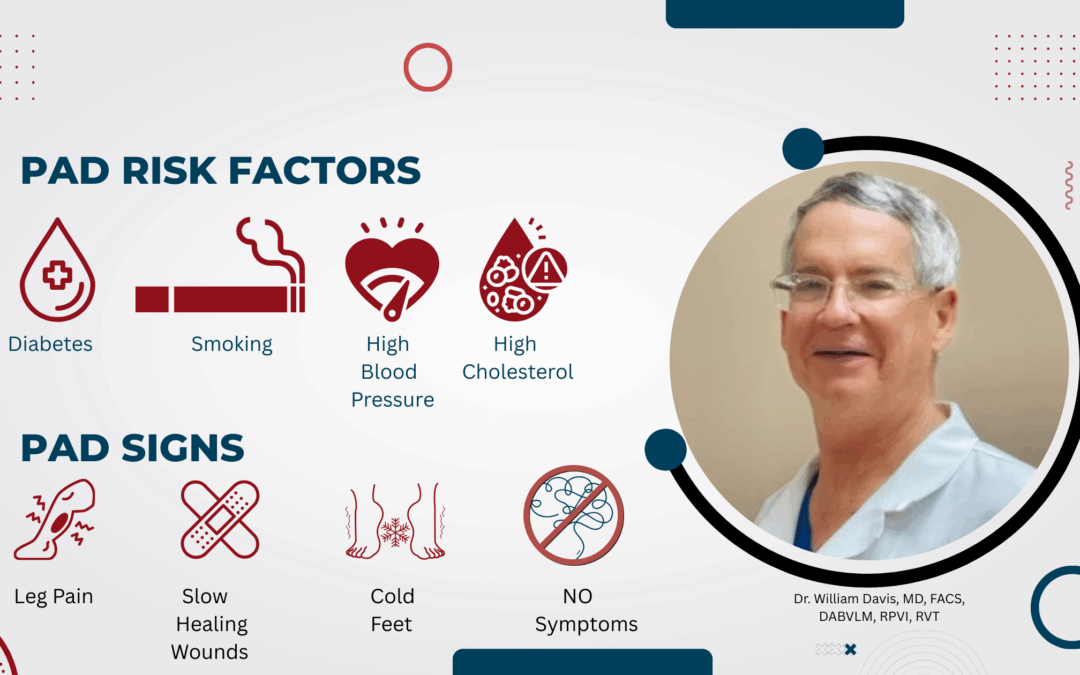What Is PAD and Why It Matters
Peripheral Arterial Disease (PAD) occurs when narrowed arteries reduce blood flow to the limbs—typically the legs—leading to serious complications like chronic pain, non‑healing wounds, and even limb loss. PAD awareness is critical, yet many patients overlook warning signs, making early detection vital.
Risk Factors for PAD
If you have one or more of the following, your risk is elevated:
- Smoking (the most significant modifiable risk factor)
- Diabetes mellitus
- High blood pressure (hypertension)
- High cholesterol (hyperlipidemia)
- Age 65 and older—or 50+ with diabetes or smoking history
- Family history of vascular disease
These factors contribute to arterial blockages that reduce blood flow—and can quietly progress. Integrating “PAD risk factors” and “peripheral arterial disease symptoms” naturally boosts SEO.
Signs, Symptoms, and Why PAD Is the “Silent Killer”
Classic symptoms include leg pain or cramping during walking (claudication), numbness, aching, or heaviness in the legs, slow‑healing leg wounds, and coldness in the lower foot or toes. But here’s the catch: up to half of PAD patients experience no noticeable symptoms. Because it often advances silently, uncontrolled, it increases the risk of heart attack, stroke, and amputation—hence its moniker as the “silent killer.”
Why Choose Dr. William H. Davis at Douglas Vascular Center
Dr. Davis, MD, FACS, DABVLM, RPVI, RVT, leads the Douglas Vascular Center team with decades of experience in vascular surgery and endovascular interventions. His board certifications, vascular technologist credentials, and compassionate approach deliver precision care for PAD. As the community’s trusted expert, Dr. Davis has successfully treated countless patients from Douglas, GA, and beyond.
FAQs About PAD
- What age should I start screening for PAD?
Generally, start screening after age 65—or earlier if you have risk factors like diabetes, smoking, or hypertension. - Can PAD be reversed or managed without surgery?
Yes—through lifestyle changes (quitting smoking, exercise, cholesterol and blood pressure control), medications, and minimally invasive procedures. - Is PAD painful?
It can be—but many have mild or no symptoms, emphasizing the importance of screening even when you feel fine. - How does Douglas Vascular Center diagnose PAD?
Dr. Davis performs focused vascular assessments, including non-invasive testing (e.g., Doppler ultrasound) to evaluate blood flow and determine optimal treatment.
Take Action: Schedule Your PAD Screening Today!
Don’t overlook PAD—especially if you’re at risk or noticing any leg discomfort (or none at all). Early detection can save limbs and improve outcomes.
Call 912-384-0322 or visit DouglasVascular.com to request an appointment and let Dr. Davis guide you toward healthier circulation.

